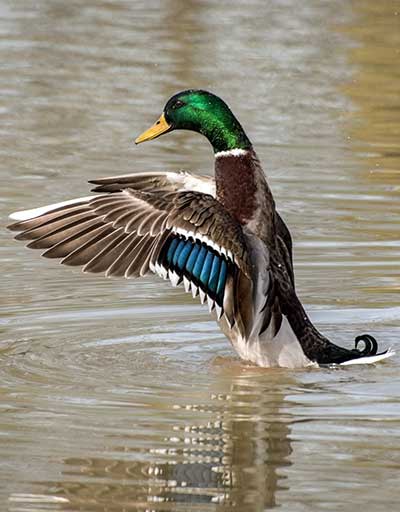[et_pb_section bb_built=”1″ next_background_color=”#000000″ _builder_version=”3.17.6″][et_pb_row _builder_version=”3.17.6″ custom_margin=”||0px|” custom_padding=”||0px|”][et_pb_column type=”2_3″][et_pb_text _builder_version=”3.17.6″]
Gathering accurate data on UK quarry species is paramount as it allows us to monitor and manage individual species.
In 2018/19, BASC started an annual wing survey that gathered details on what was being shot in the UK. In the first year a total of 2,048 wings including 1,572 ducks, 120 geese and 353 woodcocks were collected (extras were common snipe and golden plover). From this data, we were able to determine the species and, where possible, the age and sex of the birds.
Collating this data is vital to enhancing our understanding of quarry species. By looking at the age of the birds we can understand the breeding success of individual species, and from the sex of the birds we can see how survival rates differ between males and females.
Research has shown that young teal survival rates decrease across their migratory route. BASC science officer, Heather Warrender explains:
[/et_pb_text][/et_pb_column][et_pb_column type=”1_3″][et_pb_image _builder_version=”3.17.6″ src=”https://0ld.basc.org.uk/wp-content/uploads/2019/08/mallard-duck.jpg” max_width=”80%” /][/et_pb_column][/et_pb_row][et_pb_row _builder_version=”3.17.6″ custom_margin=”0px||0px|” custom_css_main_element=”max-width:1080px !important;”][et_pb_column type=”4_4″][et_pb_text _builder_version=”3.17.6″]
“Young birds make up nearly 90 per cent of the population in Finland, however this decreases to around 60 per cent by the time the birds get to France. From this we predicted that the age ratio of our UK population would be similar to, or possibly a bit lower than, the French population. Our current wing dataset has confirmed this and showed an exact 50:50 ratio of juveniles to adults.”
[/et_pb_text][/et_pb_column][/et_pb_row][/et_pb_section][et_pb_section bb_built=”1″ fullwidth=”on” specialty=”off” prev_background_color=”#ffffff” next_background_color=”#ffffff” _builder_version=”3.17.6″ background_image=”https://0ld.basc.org.uk/wp-content/uploads/2019/08/geese-silhouette-1600.jpg” custom_css_main_element=”min-height:400px;”][/et_pb_section][et_pb_section bb_built=”1″ fullwidth=”off” specialty=”off” prev_background_color=”#000000″][et_pb_row _builder_version=”3.17.6″ custom_css_main_element=”max-width:1080px !important;”][et_pb_column type=”4_4″][et_pb_text _builder_version=”3.17.6″]
The BASC science team are hoping to enhance this understanding by collaborating with other European countries along the migratory route of waterfowl, to better monitor these populations and understand any problems affecting breeding grounds. As part of this project, Matt Ellis (head of science) and Heather Warrender (science officer) are off to the International Union of Game Biologists in Lithuania to speak about their work.
How can you help?
You can help by collecting wings from each duck and goose you shoot.
- Remove one wing as close to the body as possible using either knife or secateurs, ensuring you get all the tertial feathers, and ideally the axillaries too (see images).
- Place each wing in its own zip-lock plastic bag and write on it in permanent marker the date and the county where it was shot.
- Seal the bag and place it in the freezer.
Then, either:
- Arrange with your club or joint council to collect your wings and for your representative to bring them along to one of our regional offices, or contact the office to arrange collection.
- Email to discuss alternative arrangements: monitoring@0ld.basc.org.uk
For more information visit: here
[/et_pb_text][/et_pb_column][/et_pb_row][/et_pb_section]
